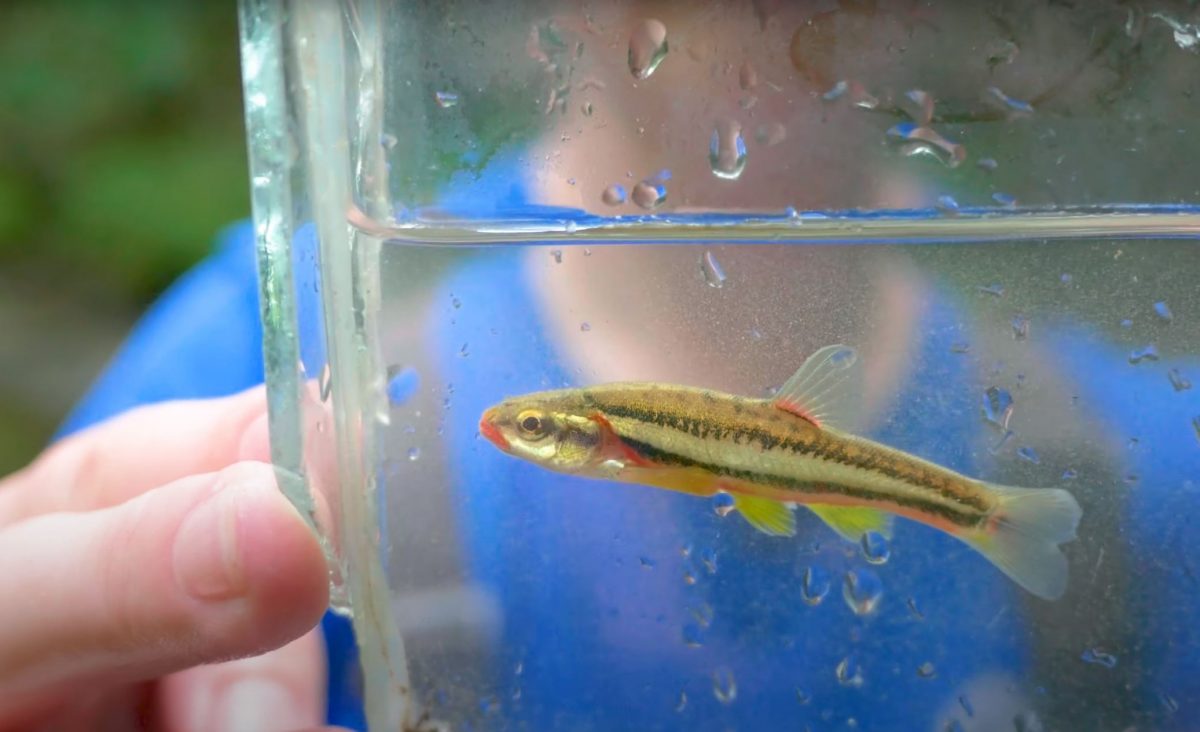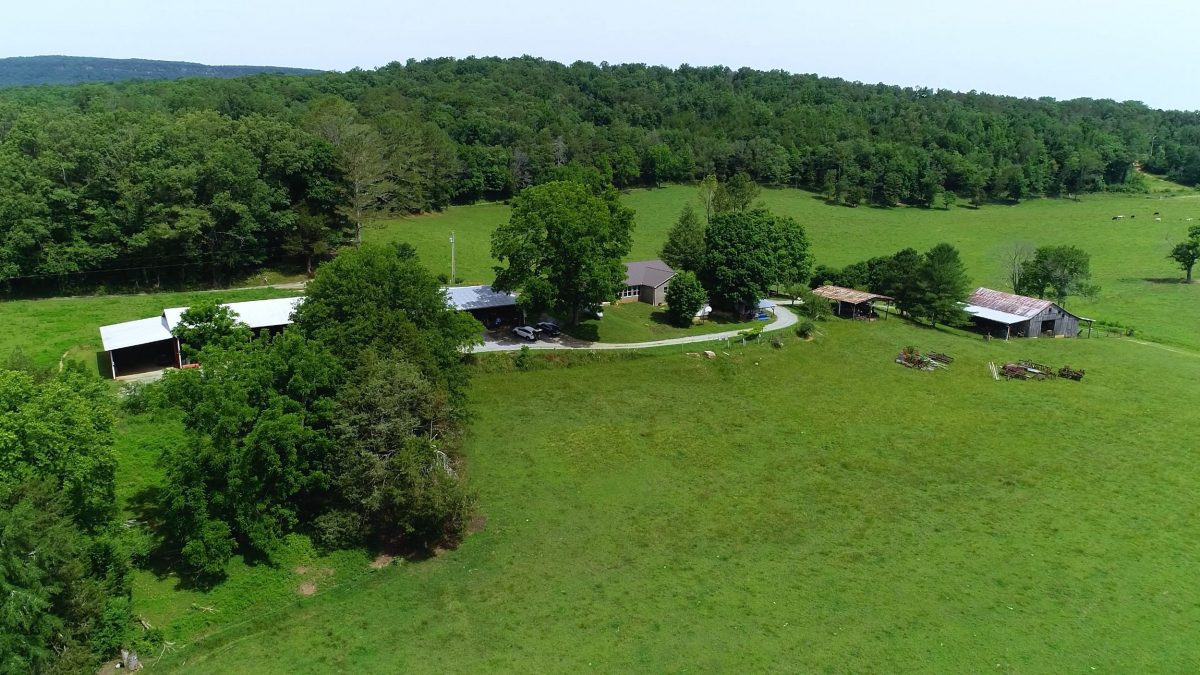Chattanooga, Tenn. (Aug. 25, 2022) – Tennessee is as much a patchwork quilt of farms as an intricately woven lacework of streams and rivers. Soon, farmers and the aquatic life living alongside them will reap the benefits of $10 million in federal funds to support water-friendly agricultural improvements in the rolling uplands of the state’s southeastern corner.
Recently, the U.S. Department of Agriculture (USDA) approved the allocation of more than $197 million to support Regional Conservation Partnership Programs (RCPP) throughout the nation. These initiatives promote coordination between USDA’s Natural Resources Conservation Service (NRCS) and partnering organizations that are already engaged in conservation efforts.
Among USDA’s list of 41 approved projects this year is a five-year allocation of $10 million — $2 million per year — to fuel the “Ridges to Rivers” program, an RCPP focused on agricultural improvements in a six-county region spanning the Sequatchie River Valley and Walden Ridge. This federal funding matches $11.8 million already being invested in the region by more than a dozen local partnering organizations that applied to receive this funding.
While the Tennessee Aquarium Conservation Institute served as the lead applicant, this federal funding is directed toward landowners. However, the Aquarium and representatives from NRCS will meet with property owners and collaboratively determine how best to allocate USDA funds toward conservation-minded improvements on local farms. Projects approved through the RCPP will promote better water quality by reducing sediment, fertilizer, and bacteria flowing into the region’s streams and rivers.
The region targeted by the Ridges to Rivers program provides habitat for a number of endangered species, including the Laurel Dace, a colorful minnow classified by scientists as the second most-imperiled fish east of the Mississippi River and among the top 10 most-endangered fish in all of North America.

Fig. 2 Laurel Dace
Since opening its doors in 1992, the Tennessee Aquarium’s mission has been to connect the public with nature and empower them to make informed decisions about water and wildlife. With the opening of the Tennessee Aquarium Conservation Institute’s flagship field station in 2016, the Aquarium positioned itself as a convening point for freshwater science stakeholders throughout the Southeast.
The Aquarium pools resources and amplifies otherwise separate efforts to safeguard the Southeast’s astounding aquatic biodiversity by bringing together and working alongside researchers, universities, nonprofits, and government agencies. The approval of the RCPP application proves the benefits of that collaborative approach, says Dr. Anna George, the Aquarium’s vice president of conservation science and education.
“For many years, the Aquarium has been working to save the Laurel Dace on Walden Ridge,” Dr. George says. “Through this journey, we’ve been able to develop relationships with other nonprofits, government agencies and — importantly — private landowners, who also wanted to have healthier streams and rivers in the Tennessee and Sequatchie watersheds.

“We saw an opportunity to magnify our impact by collaborating with all of these partners to submit our program application to the U.S. Department of Agriculture for funding. Our work will focus on water quality, ensuring a high quality of life for our whole community, from the ridges to the rivers.”
The $10 million earmarked for the Ridges to Rivers program is the highest amount allocated by USDA to any RCPP this year and more than double the average allotment of $4.81 million.
The availability of these funds will significantly impact the scope of ongoing and future land — and water quality — improvements along the Sequatchie River Valley and Walden Ridge, says Justin Howard, the district conservationist at the NRCS field office in Pikeville, Tennessee.
“Targeted conservation is the best way to make a difference in the survival of threatened species, but having money to funnel to landowners is always a limit for us,” he says. “This is a once-in-a-lifetime opportunity to impact farmers, the environment, and the species who live here.”
When RCPP funds become available in 2023, representatives from the Aquarium and NRCS will meet with interested landowners to determine what improvements they would like to implement on their property that will simultaneously benefit the health of the watershed. Some of these “best management practices” will include projects such as:
- Creating alternate water sources that will keep cattle from entering streams to drink
- Installing fencing to keep livestock out of streams and to allow farmers to alternate fields between grazing and regrowing
- Planting critical areas in swells and high-erosion areas to diminish stormwater run-off
- Planting winter cover crops to reduce soil erosion in the rainy season and improve soil health
- Creating stream crossings in high-traffic areas to afford access to pastures without entering streams
- Building infrastructure around natural springs to limit foot traffic and minimize soil disturbance
- Planting “filter strips” along streams or fields to decrease erosion by slowing rainwater before it enters the water
Ultimately, Dr. George says, the influx of this money is a quintessential win-win for farmers and fish, alike.
“We all need healthy food to eat and clean water to drink, and this program shows that we can have both,” she says. “But what excites me the most is that not only will we see the impacts in communities throughout the Sequatchie Valley, we’ll also see the benefit to water and wildlife far beyond.
“Whether it’s a rare mussel in the Sequatchie River or an osprey fishing on the mainstem Tennessee, we all live downstream.”
For more information about USDA’s Regional Conservation Partnership Program, visit nrcs.usda.gov/wps/portal/nrcs/main/national/programs/financial/rcpp/
For a full list of this year’s RCPPs and additional details about each program, including the Ridges to Rivers program, visit nrcs.usda.gov/wps/portal/nrcs/detail/national/programs/financial/rcpp/?cid=nrcseprd1948235
Contributing Partners in the RCPP
- Tennessee Aquarium Conservation Institute (lead applicant)
- Crabtree Farms
- Land Trust for Tennessee
- Open Space Institute
- Soil Conservation Districts
- Bledsoe County
- Sequatchie County
- Rhea County
- Hamilton County
- Marion County
- Southeast Tennessee Resource Conservation & Development Council
- TennGreen Land Conservancy
- Tennessee Department of Agriculture
- Division of Forestry
- Agricultural Enhancement Program
- Tennessee Department of Environment and Conservation
- Division of Water Resources
- Thrive Regional Partnership
- University of Tennessee Chattanooga
- IGTLab
- US Fish & Wildlife Service
- Partners for Fish and Wildlife Program
- Ecological Services Program
- Science Applications Program
Supporting Partners in the RCPP
- Chattanooga Food Center
- Tennessee Department of Environment and Conservation
- Division of Natural Areas
- Tennessee River Gorge Trust
- Tennessee Technology University
- Water Center
- Tennessee Valley Authority
- Tennessee Wildlife Resources Agency
- Fisheries Program
- Private Lands Program